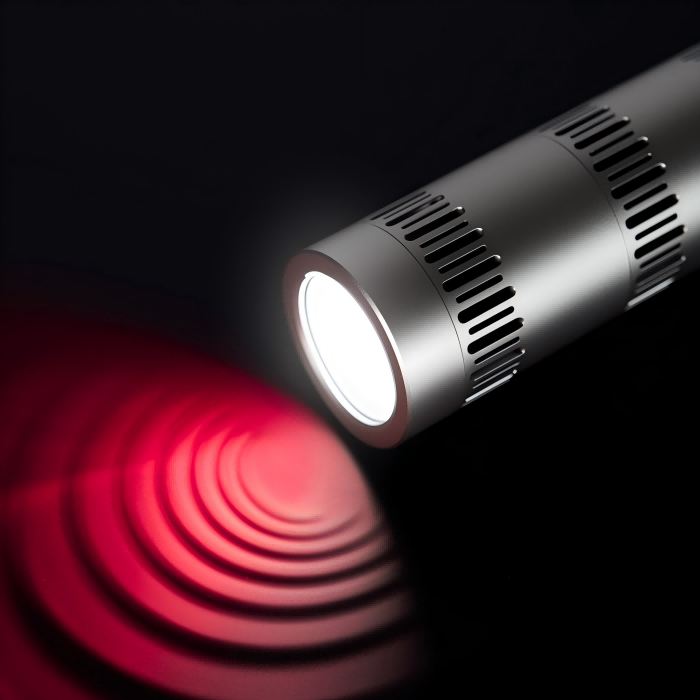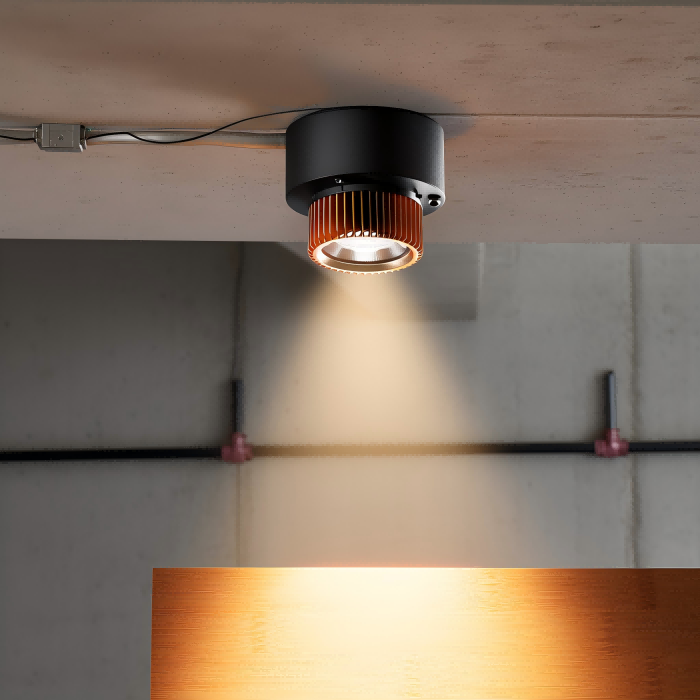◼ Thermal Management: The Primary Catalyst
Fundamentals:
During photoelectric conversion, LED chips and drivers inherently dissipate energy as heat. Excessive temperatures critically degrade LED lifespan (accelerating lumen depreciation) and damage driver components—especially electrolytic capacitors.
Protection Mechanism:
Premium LED drivers integrate intelligent thermal management via embedded temperature sensors or driver ICs with thermal sensing capabilities.
Operational Workflow:
When inadequate heat dissipation occurs (due to poor ventilation, dust accumulation, or insufficient heatsinks) or high-power operation elevates temperatures beyond safety thresholds →
The driver’s protection circuit triggers →
Output current actively reduces to safeguard LEDs and capacitors.
Consequence:
Since LED brightness correlates linearly with current (I), and wattage (P ≈ I × Vf, where Vf is stable), reduced current lowers both power consumption (W) and light output (lm).
Key Insight:
This deliberate brightness-power tradeoff extends luminaire lifespan. It’s a design feature, not a flaw. Cheap luminaires often lack robust thermal management, leading to premature failure.

◼ Grid Voltage Fluctuations: Secondary Influence
Input Instability:
Mains voltage varies (±10% or more) due to grid load shifts, industrial equipment cycling, or line losses.
Driver Response:
Wide-Voltage Tolerance (170–265V AC): Quality constant-current (CC) drivers minimize output deviation within this range via high line/load regulation.
Critical Scenarios:
Near voltage limits: CC precision degrades, causing visible power shifts.
Low-end drivers (e.g., resistive-capacitive droppers) exhibit near-proportional power-voltage dependence – avoid these obsolete designs.
Harmonic distortion may impair driver efficiency.
◼ Driver Aging & Component Drift
Electrolytic Capacitors:
Capacity degrades and ESR (Equivalent Series Resistance) rises over time/temperature →
Reduced current stability, efficiency loss, and slower transient response.
Semiconductors (MOSFETs/Diodes):
Prolonged heat exposure causes parametric drift, subtly compromising performance.

◼ LED Chip Behavior
Efficacy-Temperature Inversion:
LED luminous efficacy (lm/W) drops at high junction temperatures (Tj).Forward Voltage (Vf) Dynamics:
Vf slightly decreases as Tj rises. Under CC drive, this marginally reduces power (P = I × Vf), but thermal step-down protection dominates.
◼ Contributing Variables
| Factor | Impact on Power Stability |
|---|---|
| Dimming/Smart Control | Intentional adjustments |
| Phase-Cut Dimmer Incompatibility | Flickering/unstable output |
| Ambient Temperature | Alters heat dissipation efficiency |
| Parallel Luminaires | Potential cross-interference |

Conclusion: Embracing Intelligent Fluctuation
LED wattage variability stems primarily from adaptive thermal protection and secondary grid responses. Premium luminaires minimize fluctuations using:
✅ Optimized thermal management (heatsinks/enclosures)
✅ Wide-input-voltage CC drivers (>90% line regulation)
✅ Low-ESR/high-temperature capacitors
Critical Notes:
Thermal step-down is the dominant, protective factor.
Grid-induced shifts are typically <5% with quality drivers.
Select wisely: Prioritize drivers with ≥200V heatproof caps and IP67-rated enclosures for stability.
Power variations <10% are normal. Suspect defects if fluctuations exceed 15%, cause flickering, or coincide with overheating.
Understanding these principles empowers better LED system design, installation, and maintenance – unlocking decades of reliable illumination.



